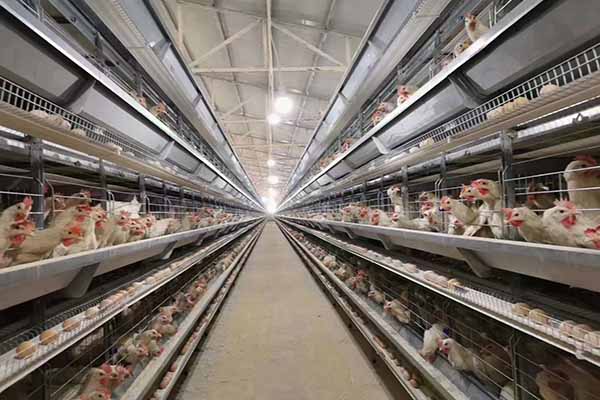Improving Poor Ventilation in Uganda Chicken Farms: A Practical Guide
Time : 2025-04-28
Hey there, fellow chicken farmers in Uganda! If you’re struggling with poor ventilation in your chicken farm, you’re not alone. Ventilation is a crucial aspect of keeping your flock healthy and productive. In this article, we’ll dive into the ins and outs of poor ventilation in Uganda chicken farms and provide you with practical tips on how to improve it. Let’s get into it!
Understanding Poor Ventilation in Uganda Chicken Farms
Poor ventilation can lead to a range of issues, including respiratory problems, heat stress, and even death in extreme cases. Here are some common signs of poor ventilation in your chicken farm:
– High ammonia levels: Ammonia is a byproduct of chicken droppings. High levels can cause respiratory issues and eye irritation for your flock.
– High humidity: This can lead to heat stress, which can affect egg production and overall health.
– Uncomfortable temperatures: If your chickens are too hot or too cold, they won’t lay eggs well and may become stressed.
– Unhealthy flock: Poor ventilation can lead to the spread of diseases and infections.
Causes of Poor Ventilation in Uganda Chicken Farms
Now that we understand the issues, let’s talk about the causes. Here are some common reasons why your Uganda chicken farm might have poor ventilation:
– Inadequate windows and doors: If your farm doesn’t have enough openings for air to flow in and out, it’s bound to have poor ventilation.
– Improperly sized ventilation systems: A ventilation system that’s too small or too large for your farm can lead to inefficiencies.
– Location: Farms in areas with high humidity or extreme temperatures may struggle with ventilation.
– Poorly insulated buildings: If your farm is not well insulated, it can be challenging to maintain a comfortable temperature for your chickens.
How to Improve Poor Ventilation in Your Uganda Chicken Farm
Now that we know the issues and causes, let’s get into the nitty-gritty of improving ventilation. Here are some practical steps you can take:
1. Assess Your Current Ventilation System
Before making any changes, it’s important to assess your current ventilation system. This includes checking the size and placement of windows, doors, and ventilation fans. If you’re unsure, it may be worth consulting with a professional.
2. Increase Airflow
One of the most effective ways to improve ventilation is to increase airflow. Here are some strategies:
– Add more windows and doors: Ensure that your farm has enough openings for air to flow in and out.
– Install ceiling fans: Ceiling fans can help circulate air and reduce humidity.
– Use ventilation fans: Ensure that your ventilation fans are working properly and that they’re sized correctly for your farm.
3. Control Humidity
High humidity can be a real problem for chicken farms. Here’s how to manage it:
– Use dehumidifiers: Dehumidifiers can help reduce humidity levels in your farm.
– Ensure proper drainage: Ensure that your farm has proper drainage to prevent water from pooling.
4. Insulate Your Building
Proper insulation can help maintain a comfortable temperature for your chickens and reduce the strain on your ventilation system. Here’s what to do:
– Insulate walls and ceilings: Use insulation materials like foam or fiberglass.
– Seal gaps and cracks: Make sure your building is airtight to prevent drafts.
5. Maintain Your Ventilation System
Regular maintenance is key to keeping your ventilation system in top condition. Here’s what to do:
– Clean and inspect fans and vents: Keep them free of debris and ensure they’re working properly.
– Change air filters: Regularly replace air filters to improve air quality and prevent dust and dirt from entering your farm.
Conclusion
Improving ventilation in your Uganda chicken farm is essential for the health and productivity of your flock. By following these practical tips, you can create a more comfortable environment for your chickens and ensure a successful farm operation. Remember, a well-ventilated farm is a happy farm!
Tags












